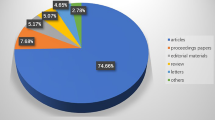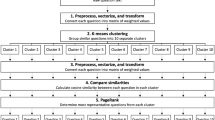Abstract
Background
This study investigated the trends, motivations and preferences of rhinoplasty in China.
Methods
Data on rhinoplasty were collected from Xiaohongshu and analyzed for trends. Text analysis and word frequency statistics were performed on the notes and comments using Python modules.
Results
We obtained 1065 notes with 102,153 comments, 239,383 collections and 640,579 likes. The number of rhinoplasty-related publications increased annually, correlating with per capita disposable income of households (DI) growth (r2 = 0.609, P = 0.041 < 0.05). In the Southern provinces, there was a notably higher volume of publications compared to the Northern provinces (P = 0.001). Furthermore, a significant correlation was observed between publication data, population size, and the DI (r2 = 0.786, P < 0.001). The nasal tip (3197) and nasion (1409) were the most mentioned nasal subunits. “Good-looking” (9672) and “natural” (2811) were the most used words to describe the nose shape. The “doctor” (4377), the “hospital” (2182) and “hyaluronic acid” (2106) were the most mentioned rhinoplasty procedure related vocabulary.
Conclusions
Discussions about rhinoplasty in China are increasing, and more people express their desire for rhinoplasty on social networks, related to China’s DI growth. The Southern provinces show a higher inclination toward these discussions, a trend that correlates with our findings of a positive association between NOPs and both DI and population size. Netizens pay more attention to the shape of nasal tip and nasion, and prefer the good-looking and natural appearance. Most people consider autologous cartilage or hyaluronic acid injection for rhinoplasty. Doctors are the primary consideration for patients.
Level of Evidence V
This journal requires that authors assign a level of evidence to each article. For a full description of these Evidence-Based Medicine ratings, please refer to the Table of Contents or the online Instructions to Authors www.springer.com/00266.






Similar content being viewed by others
References
Li D, An Y, Yang X (2016) An overview of Asian rhinoplasty. Ann Plast Surg 77(Suppl 1):S22–S24. https://doi.org/10.1097/sap.0000000000000841. (Epub 2016/07/13 PubMed PMID: 27404467)
Jin HR, Won TB (2016) Rhinoplasty in the Asian patient. Clin Plast Surg 43(1):265–279. https://doi.org/10.1016/j.cps.2015.09.015. (Epub 2015/12/01 PubMed PMID: 26616713)
Yu MS, Jang YJ (2014) Preoperative computer simulation for Asian rhinoplasty patients: analysis of accuracy and patient preference. Aesthet Surg J 34(8):1162–1171. https://doi.org/10.1177/1090820x14547947
Wei J, Dai C, Li S (2023) Revision rhinoplasty in Asians. Clin Plast Surg 50(1):141–149. https://doi.org/10.1016/j.cps.2022.08.004. (Epub 2022/11/18 PubMed PMID: 36396253)
Jang YJ, Kim DY (2016) Treatment strategy for revision rhinoplasty in Asians. Facial Plast Surg 32(6):615–619. https://doi.org/10.1055/s-0036-1594254. (PubMed PMID: 28033636)
Lan MY, Jang YJ (2015) Revision rhinoplasty for short noses in the Asian population. JAMA Facial Plast Surg 17(5):325–332. https://doi.org/10.1001/jamafacial.2015.0645. (Epub 2015/06/26 PubMed PMID: 26111006)
Rhee SC, Lee SH (2010) Attractive composite faces of different races. Aesthet Plast Surg 34(6):800–801. https://doi.org/10.1007/s00266-010-9606-7
Park BY, Kim MJ, Kang SR, Hong SE (2016) A legal analysis of the precedents of medical disputes in the cosmetic surgery field. Arch Plast Surg 43(3):278–283. https://doi.org/10.5999/aps.2016.43.3.278. (Epub 2016/05/25 PubMed PMID: 27218027; PubMed Central PMCID: PMCPMC4876158)
Vila-Nova da Silva DB, Nahas FX, Ferreira LM (2015) Factors influencing judicial decisions on medical disputes in plastic surgery. Aesthet Surg J 35(4):477–483. https://doi.org/10.1093/asj/sju089. (Epub 2015/04/25 PubMed PMID: 25908704)
Santos PJF, Daar DA, Paydar KZ, Wirth GA (2018) Readability of online materials for rhinoplasty. World J Plast Surg 7(1):89–96 (Epub 2018/04/14. PubMed PMID: 29651397; PubMed Central PMCID: PMCPMC5890371)
Tseng CC, Gao J, Talmor G, Paskhover B (2021) Characterizing patient questions before and after rhinoplasty on social media: a big data approach. Aesthet Plast Surg 45(4):1685–1692. https://doi.org/10.1007/s00266-021-02203-9
Eldaly AS, Mashaly SM (2022) The new dilemma of plastic surgery and social media: a systematic review. Eur J Plast Surg 45(3):371–382. https://doi.org/10.1007/s00238-021-01891-5
Chen J, Ishii M, Bater KL, Darrach H, Liao D, Huynh PP et al (2019) Association between the use of social media and photograph editing applications, self-esteem, and cosmetic surgery acceptance. JAMA Facial Plast Surg 21(5):361–367. https://doi.org/10.1001/jamafacial.2019.0328. (Epub 2019/06/28 PubMed PMID: 31246236; PubMed Central PMCID: PMCPMC6604085)
American Society of Plastic Surgeons (2020) Plastic surgery statistics report
Zhong Y (2022) The influence of social media on body image disturbance induced by appearance anxiety in female college students. Psychiatr Danub 34:S638–S644 (PubMed PMID: WOS:000807389000435)
Liu YH, Li XJ (2023) “Pale, young, and slim” girls on red: a study of young femininities on social media in post-socialist China. Fem Media Stud. https://doi.org/10.1080/14680777.2023.2226830.PubMedPMID:WOS:001011729300001
Jiang K (2021) The influence of e-WOM on young female consumers’ purchase behaviour in the cosmetic industry in China. Master’s thesis, National College of Ireland, Dublin
Van Der Walt S, Colbert SC, Varoquaux G (2011) The NumPy array: a structure for efficient numerical computation. Comput Sci Eng 13(2):22–30
McKinney W (2010) Data structures for statistical computing in Python. In: Proceedings of the 9th Python in science conference, Austin, TX
Waskom ML (2021) Seaborn: statistical data visualization. J Open Sour Softw 6(60):3021
Tian H, Gao C, Xiao X, Liu H, He B, Wu H, et al. (2020). SKEP: sentiment knowledge enhanced pre-training for sentiment analysis. arXiv preprint arXiv:200505635
Jin Y (2017) Development of word cloud generator software based on python. Procedia Eng 174:788–792
Moon J, Ha J, Kang D (2023) Relationship between total expenditure on cosmetic procedures in the United States and NASDAQ 100 index. Plast Reconstr Surg Glob Open 11(5):e4981. https://doi.org/10.1097/gox.0000000000004981. (Epub 2023/05/18 PubMed PMID: 37197010; PubMed Central PMCID: PMCPMC10184982 research, authorship, and/or publication of this article. Disclosure statements are at the end of this article, following the correspondence information.)
Ruan F-L, Yan L (2022) Interactions among electricity consumption, disposable income, wastewater discharge, and economic growth: evidence from megacities in China from 1995 to 2018. Energy 260:124910
Yu K, Zheng L, Li Y, Xi H, Lu S, Zhang X (2016) Differences of head-face morphological traits between southern and northern chinese han. Acta Anat Sin 47(03):404–408
Wu X, Liu W, Bae C (2012) Craniofacial variation between southern and northern Neolithic and modern Chinese. Int J Osteoarchaeol 22(1):98–109
Maraseni TN, Qu J, Yue B, Zeng J, Maroulis J (2016) Dynamism of household carbon emissions (HCEs) from rural and urban regions of northern and southern China. Environ Sci Pollut Res 23:20553–20566
Gordon CR, Pryor L, Afifi AM, Benedetto PX, Langevin CJ, Papay F et al (2010) Cosmetic surgery volume and its correlation with the major US stock market indices. Aesthet Surg J 30(3):470–475. https://doi.org/10.1177/1090820x10372209
Krieger LM, Shaw WW (2000) Wall street’s growing influence on plastic surgery. Plast Reconstr Surg 105(5):1768–1773. https://doi.org/10.1097/00006534-200004050-00027. (Epub 2000/05/16. PubMed PMID: 10809112)
Kumar V, Jain A, Atre S, Shome D, Kapoor R, Doshi K et al (2021) Non-surgical rhinoplasty using hyaluronic acid dermal fillers: a systematic review. J Cosmet Dermatol 20(8):2414–2424. https://doi.org/10.1111/jocd.14173
Funding
None
Author information
Authors and Affiliations
Corresponding author
Ethics declarations
Conflict of interest
The authors declare that they have no conflicts of interest to disclose.
Human and Animal Rights
This article does not contain any studies with human participants or animals performed by any of the authors.
Informed Consent
For this type of study informed consent is not required.
Additional information
Publisher's Note
Springer Nature remains neutral with regard to jurisdictional claims in published maps and institutional affiliations.
Rights and permissions
Springer Nature or its licensor (e.g. a society or other partner) holds exclusive rights to this article under a publishing agreement with the author(s) or other rightsholder(s); author self-archiving of the accepted manuscript version of this article is solely governed by the terms of such publishing agreement and applicable law.
About this article
Cite this article
Liu, Z., He, S., Li, X. et al. Trends and Preferences of Rhinoplasty Among Chinese Patients: A Social Media Analysis. Aesth Plast Surg (2024). https://doi.org/10.1007/s00266-024-03893-7
Received:
Accepted:
Published:
DOI: https://doi.org/10.1007/s00266-024-03893-7




